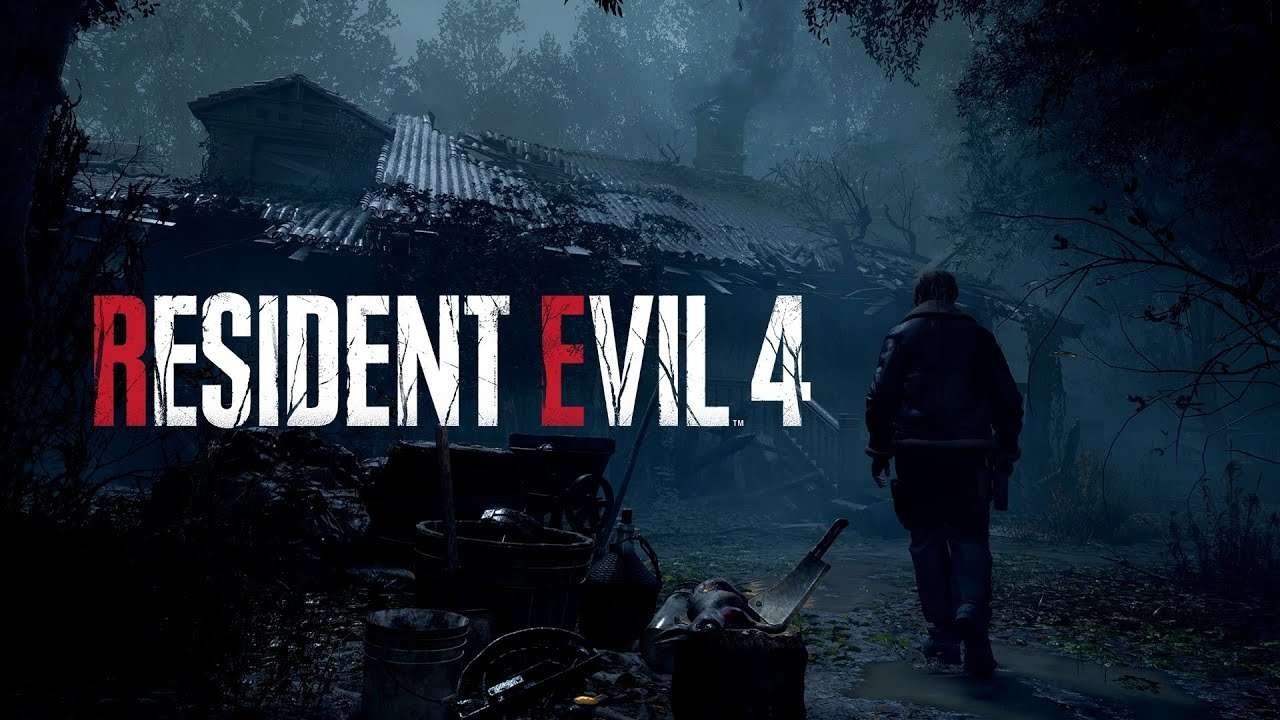Discover the thrilling horror survival game "That's Not My Neighbor". Learn about its features, gameplay mechanics, story elements, and tips for mastering the game.
“That’s Not My Neighbor” is an immersive horror survival game that puts players in a suspenseful scenario where they must uncover the dark secrets of their mysterious neighbor. This guide delves into the game’s features, gameplay mechanics, and tips to help you navigate and survive the chilling adventure.

Introduction
Overview of the Game
“That’s Not My Neighbor” is an immersive horror survival game that places players in a suspenseful scenario where they must uncover the dark secrets of their mysterious neighbor. Set in 1955, you play as a doorman responsible for identifying doppelgangers attempting to infiltrate an apartment building. The game combines document inspection mechanics, similar to “Papers, Please,” with a suspenseful horror twist.
Your main task is to verify the identities of incoming residents using paperwork and subtle observational skills to discern genuine tenants from doppelgangers. The game requires meticulous scrutiny, as letting in a doppelganger or wrongly accusing a real resident can affect your score and lead to various in-game consequences. Players praise the game for its unique concept, engaging gameplay, and chilling atmosphere.
As players delve deeper into the game’s storyline, they encounter unexpected twists and chilling revelations that keep them on the edge of their seats.
How the Game Excels in the Horror Genre
“That’s Not My Neighbor” stands out in the horror genre due to its unique blend of suspense, stealth, and puzzle-solving. Unlike traditional horror games that rely heavily on jump scares, this game emphasizes psychological horror and strategic gameplay. It appeals to fans of survival horror by offering a gripping narrative and intense gameplay experience that requires both strategy and courage. The game’s ability to create a tense atmosphere and maintain a sense of mystery makes it a notable entry in the horror genre, attracting players who enjoy a deeper, more cerebral kind of fear.
Key Features of “That’s Not My Neighbor”
Immersive Storyline
“That’s Not My Neighbor” offers a captivating and intricate storyline that revolves around the enigmatic neighbor. Players must piece together clues and unravel the neighbor’s dark secrets. The narrative is designed to keep players engaged with its twists and turns, revealing layers of mystery as the game progresses.
Gameplay Mechanics
– Exploration and Investigation: Players explore the neighborhood and the neighbor’s house, searching for clues and evidence. The open-ended exploration allows for a non-linear approach, giving players the freedom to investigate at their own pace.
– Puzzle-Solving Elements: The game includes a variety of puzzles that range from simple tasks to complex challenges. Solving these puzzles is essential to unlock new areas, discover secrets, and progress through the story.
– Stealth and Evasion Strategies: Staying undetected by the neighbor is crucial. Players must employ stealth tactics such as hiding, moving quietly, and using distractions to avoid being caught. This adds a layer of tension and strategy to the gameplay.
Graphics and Sound Design
– Visual Aesthetics: The game features detailed and atmospheric graphics that enhance the horror experience. Dark, shadowy environments and realistic textures create a sense of dread and immersion.
– Sound Effects and Music: Sound plays a critical role in building the game’s tense atmosphere. Ambient noises, sudden sound effects, and eerie music heighten the suspense and fear, making players constantly aware of their surroundings.
Detailed Gameplay Elements
Investigation and Exploration
– Exploring the Neighborhood: Players begin by exploring their own home and the surrounding neighborhood. This initial exploration phase is crucial for gathering background information and setting the stage for the main investigation.
– Investigating the Neighbor’s House: As players gather more clues, they must venture into the neighbor’s house. The layout of the house is intricate, with numerous rooms, hidden passages, and secret compartments that hold vital information.
– Collecting Clues and Evidence: Throughout the game, players will find various items that provide insights into the neighbor’s activities. These can include photographs, documents, personal items, and more. Collecting and analyzing these clues is essential for piecing together the mystery.
Puzzle-Solving
– Types of Puzzles: The game features a range of puzzles, from simple lock-and-key mechanisms to more complex logic puzzles. Each puzzle is designed to challenge players’ problem-solving skills and advance the storyline.
– Importance of Solving Puzzles: Successfully solving puzzles is crucial for unlocking new areas, accessing hidden information, and progressing in the game. Puzzles are often interconnected, requiring players to use information gathered from different parts of the environment.
Stealth and Evasion
– Avoiding Detection: Players must be cautious and avoid making noise that could alert the neighbor. Movement should be slow and deliberate, using crouch and walk modes to minimize sound.
– Using the Environment: The game allows players to use the environment to their advantage. This includes hiding in closets, under beds, or behind furniture. Players can also create distractions, such as throwing objects to lure the neighbor away from critical areas.
– Strategic Planning: Planning each move is essential. Players need to observe the neighbor’s patterns and plan their actions accordingly. Understanding the layout of the house and knowing the best hiding spots can make the difference between success and failure.
Characters and Story
Protagonist
– Description of the Player’s Character: The protagonist in “That’s Not My Neighbor” is a curious and determined individual, driven by a mix of fear and curiosity to uncover the dark secrets lurking next door. This character often represents the everyday person who finds themselves in an extraordinary and terrifying situation.
– Motivation and Background: The protagonist is typically motivated by a personal connection to the neighborhood or a specific event that triggers their investigation. This could be anything from strange noises at night to a disappearance that hasn’t been explained. Their background may include skills in observation and problem-solving, which help them navigate the dangers they face.
The Neighbor
– Background and Mysterious Nature: The neighbor is a central figure whose actions and past are shrouded in mystery. Little is known about them initially, creating an aura of suspense and fear. Players gradually uncover details about the neighbor’s history, which often involves dark and sinister elements.
– Role in the Story: The neighbor is both the primary antagonist and a source of numerous puzzles and challenges within the game. Their unpredictable behavior and the secrets they guard form the core of the game’s narrative, driving the player’s quest to uncover the truth.
Supporting Characters
– Other Residents: The game may include other characters who live in the neighborhood. These characters can either assist the player by providing clues and background information or add to the mystery by presenting additional challenges and subplots.
– Significance to the Storyline: Supporting characters enrich the narrative by offering different perspectives and additional layers to the story. They may have their own secrets, motivations, and interactions with both the protagonist and the neighbor, which help in building a complex and engaging storyline.
How To Download
- Visit the Official Website: Go to the official website of “That’s Not My Neighbor” or the platform where it’s hosted.
- Choose Your Platform: Select the appropriate version for your operating system (Windows, macOS, etc.).
- Download the Installer: Click the download button to get the installer file.
- Install the Game: Once downloaded, run the installer and follow the on-screen instructions to install the game on your device.
Tips and Tricks for Players
Efficient Exploration
- Explore Thoroughly:
- Check Every Corner: Take your time to explore every part of the environment. Important clues and items are often hidden in less obvious places. Thorough exploration can make a significant difference in your progress.
- Interact with Objects: Many objects in the game are interactive. Try to open drawers, cabinets, and doors. Some may contain useful items or clues that are essential for solving puzzles and advancing the story.
- Use Your Environment:
- Identify Hiding Spots: Before you start exploring the neighbor’s house, identify potential hiding spots. Knowing where to hide can save you when the neighbor is nearby.
- Observe and Plan: Watch the neighbor’s movements and behavior patterns. Planning your moves based on their routine can help you avoid detection and move safely through the house.
Solving Puzzles
- Think Outside the Box:
- Creative Solutions: Some puzzles may require unconventional thinking. Don’t be afraid to try different approaches or combine items in unexpected ways to find a solution.
- Connect the Dots: Pay attention to all the clues you gather. Often, solving a puzzle involves piecing together information from various parts of the game.
- Observe Patterns:
- Look for Clues: Many puzzles are based on patterns or sequences. Carefully examine your environment for hints that can help you understand how to solve a puzzle.
- Take Notes: If a puzzle involves multiple steps or a complex sequence, consider writing down important details. This can help you keep track of your progress and avoid missing crucial steps.
Staying Hidden
- Move Quietly:
- Crouch and Walk: Use the crouch and walk modes to move quietly and avoid making noise that could alert the neighbor. Running or making sudden movements can draw attention.
- Avoid Bright Areas: Stick to darker areas and shadows where you are less likely to be seen. Moving through well-lit areas increases the risk of being detected.
- Hide Smartly:
- Use Furniture and Dark Corners: When the neighbor is nearby, hide behind furniture, in closets, or under beds. These spots can provide temporary safety until the neighbor moves away.
- Create Distractions: Throw objects or make noise in a different part of the house to lure the neighbor away from your current location. This can give you the opportunity to move to a safer area or complete a task undetected.
Conclusion
“That’s Not My Neighbor” offers a unique blend of horror, mystery, and survival gameplay. Its immersive storyline, detailed gameplay mechanics, and atmospheric design make it a standout title in the horror genre. The game’s compelling narrative and challenging gameplay provide a thrilling experience for horror game enthusiasts. “That’s Not My Neighbor” is a must-play for anyone looking for a gripping and suspenseful adventure.
Ready to uncover the secrets of your mysterious neighbor? Dive into “That’s Not My Neighbor” today and experience the ultimate horror survival game. Join the community, share your experiences, and stay updated with the latest developments from the developers. Download the game now and start your chilling adventure!













